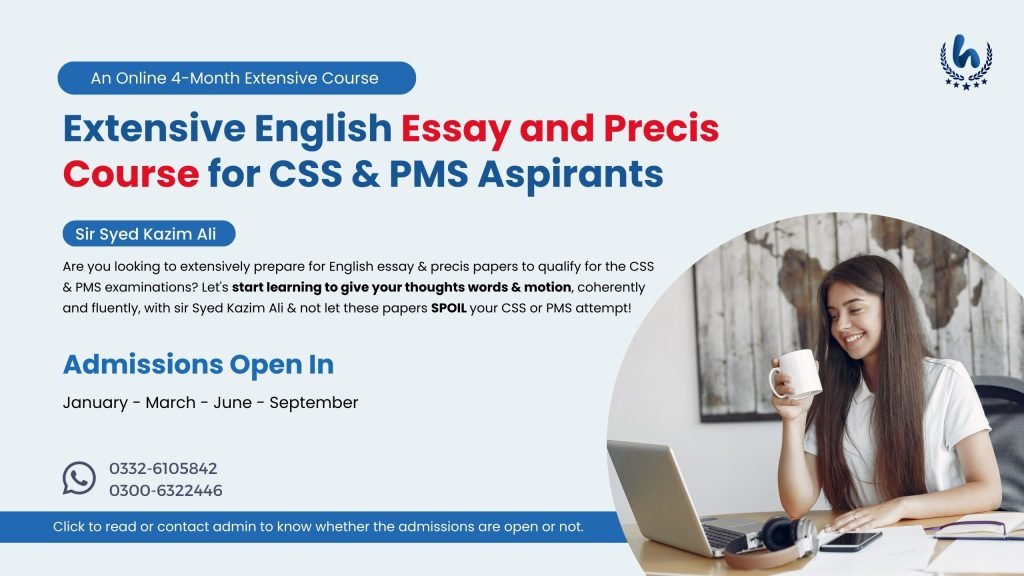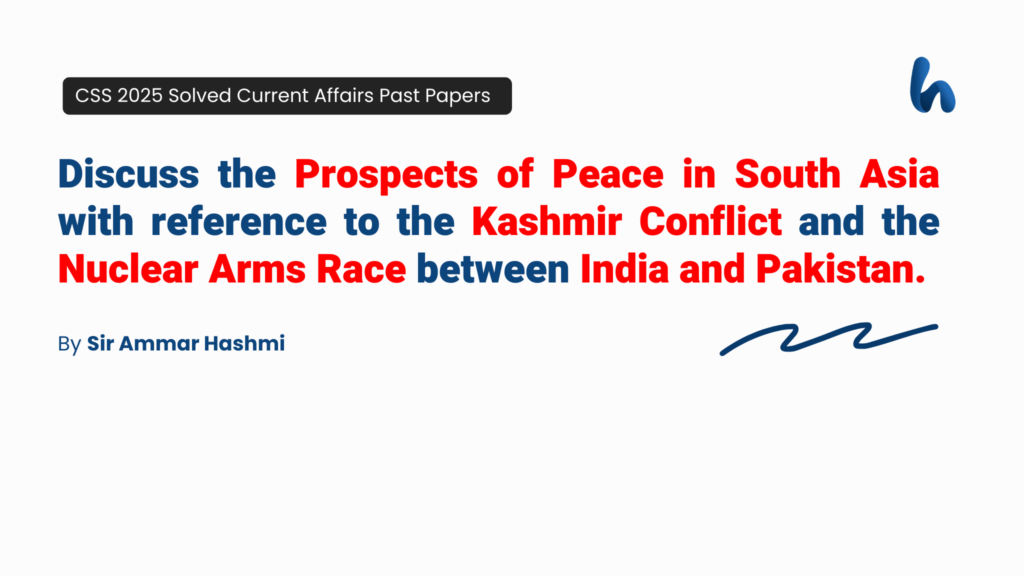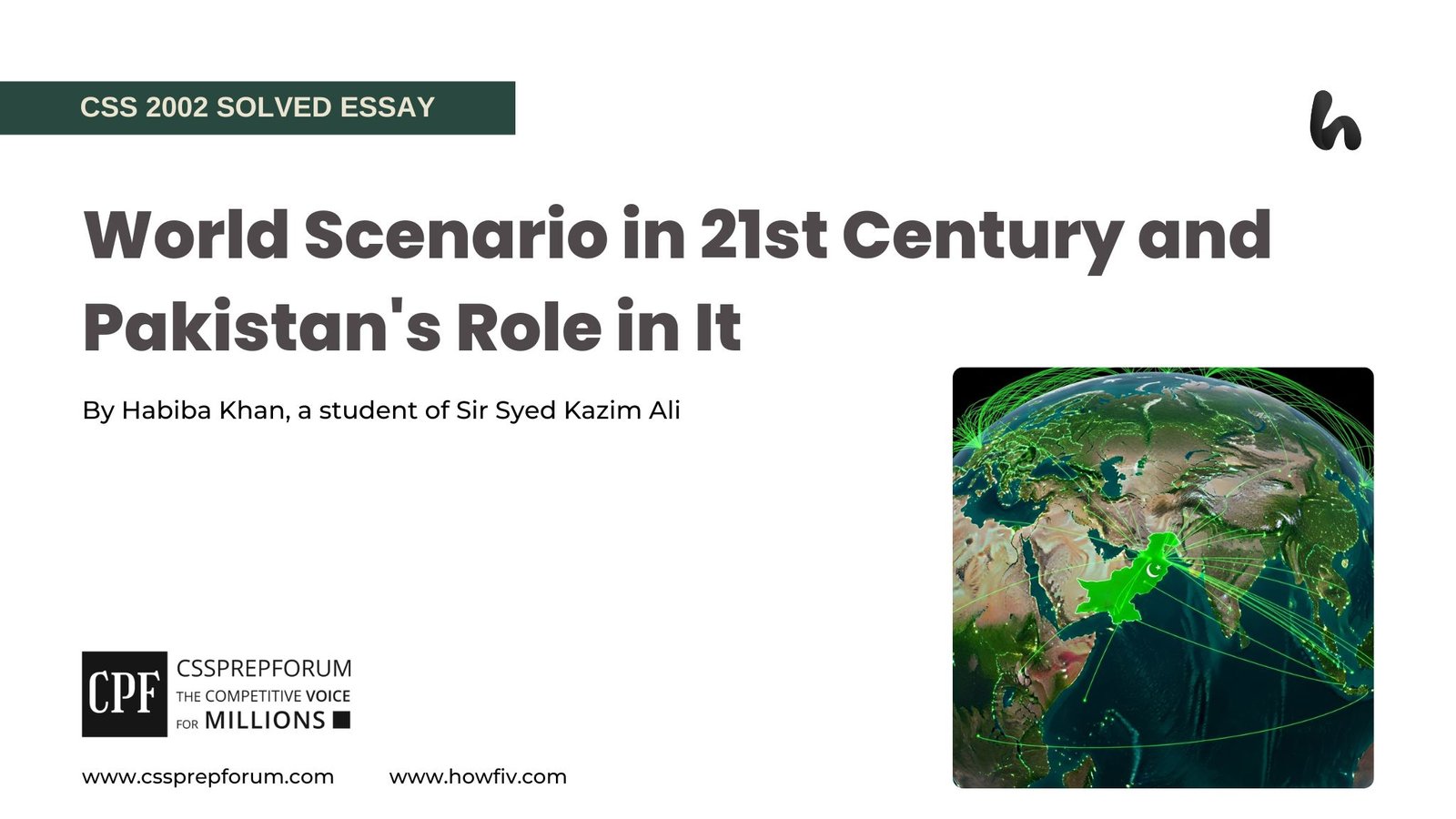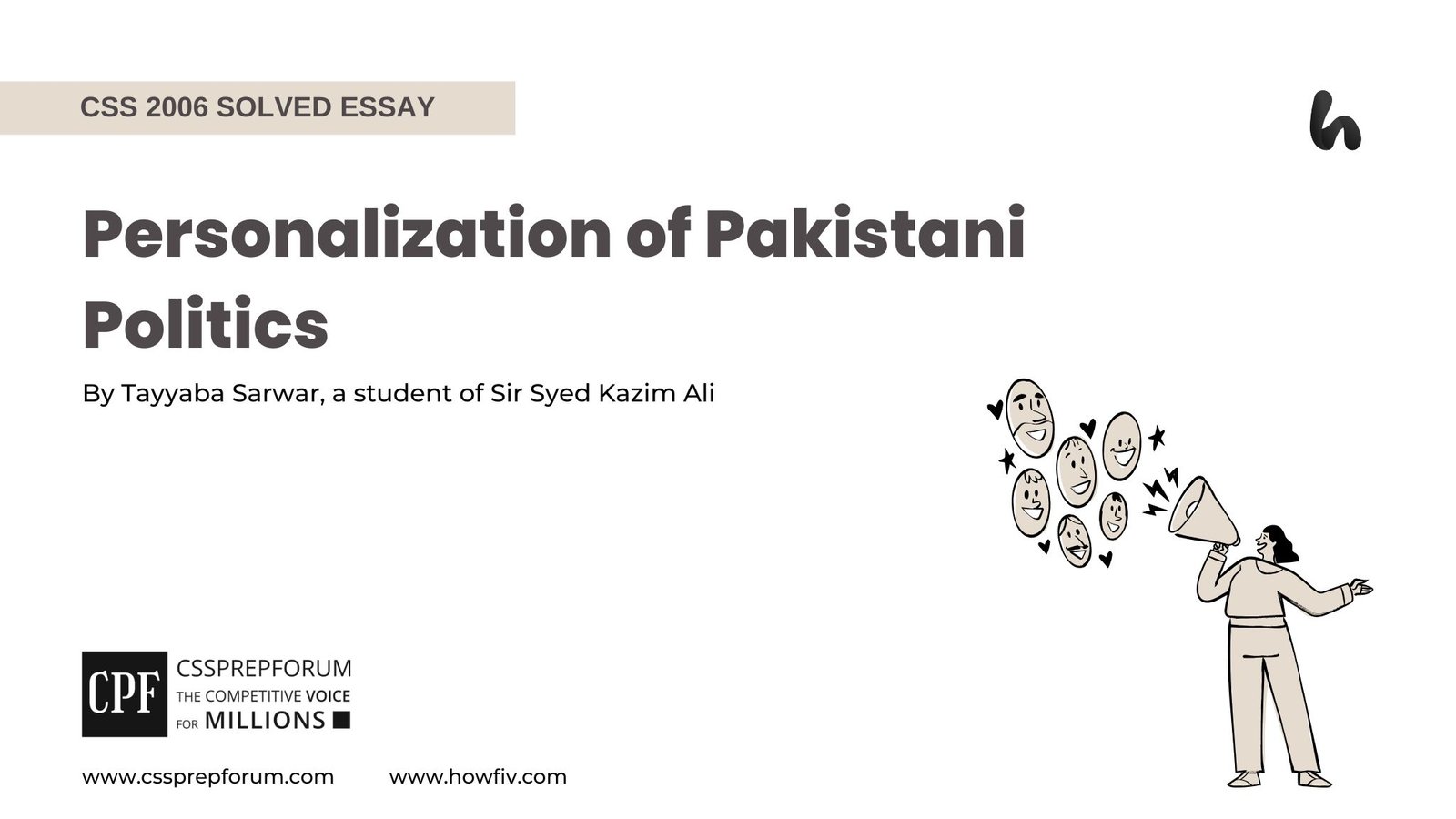CSS 2025 Solved Current Affairs Past Papers | Peace in South Asia WRT India-Pakistan Conflicts
The following question of CSS Current Affairs 2025 is solved by Sir Ammar Hashmi, the best Current Affairs Coach, on the guided pattern of Sir Syed Kazim Ali, which he taught to his students, scoring the highest marks in compulsory subjects for years. This solved past paper question is uploaded to help aspirants understand how to crack a topic or question, how to write relevantly, what coherence is, and how to include and connect ideas, opinions, and suggestions to score the maximum.

Question Breakdown
In this question, the examiner has asked one main thing, i.e., the prospects of peace in South Asia. We have to write the prospects by considering the Kashmir conflict as well as the Nuclear arms race.
Outline
1-Introduction
2-Kashmir conflict and Nuclear arms race between India and Pakistan
3-Tension between India and Pakistan as a threat to South Asia
- ✓ Military expenditures of South Asian countries expanded by 48 per cent between 2010 to 2020, as per IISS
4-Prospects of peace for South Asia
- ✓ Resolution of the long-standing Kashmir issue will lead to harmony in the region
- ✓ Reduction of the arms race will lead to a nuclear-free South Asia, promoting regional stability
- ✓ Diplomatic efforts to revive People-to-people contact and boost tourism
- ✓ Regional economic integration
- ✓ Better social development due to the reduction of military spending
5-Conclusion

Answer to the question
Introduction
The South Asian nations have shared cultures and histories. Despite this, it is also a hub for a number of prolonged issues, such as the Kashmir conflict between Pakistan and India. Similarly, the nuclear arms race between these two immediate neighbours has made the condition even more challenging. According to a study by IISS, Military expenditures of South Asian countries expanded by 48 percent between 2010 and 2020. Nevertheless, regardless of all these challenges, there are prospects for peace in the region. First, the Settlement of the Kashmir dispute will become a reality, ultimately bringing lasting peace to the region. Moreover, the reduction of the arms race will lead towards a nuclear-free South Asia. Last but not least, empowering regional institutions, such as SAARC, will eventually lead to a more secure, more socially developed, and powerful South Asia.

Kashmir conflict and Nuclear arms race between India and Pakistan
The Kashmir conflict, rooted in the 1947 partition, has led to multiple wars (1947, 1965, 1971, 1999) and remains a persistent source of tension between India and Pakistan. The dispute intensified with the 1998 nuclear tests, establishing a fragile deterrence but escalating the arms race. Frequent border skirmishes, proxy conflicts, and political hostilities continue to destabilize the region. Despite agreements like the Shimla Accord (1972) and the Lahore Declaration (1999), no lasting resolution has been achieved. The nuclearization of the conflict has raised global concerns, making Kashmir a potential flashpoint for a catastrophic war, underscoring the urgent need for diplomatic engagement.
Tension between India and Pakistan as a threat to South Asia
The Indo-Pak rivalry undermines regional stability by fuelling militarization and economic stagnation. According to IISS, South Asian military expenditures surged 48% between 2010 and 2020, diverting resources from critical sectors like health and education. This arms race exacerbates security dilemmas, increasing risks of accidental escalation. Political hostility also cripples SAARC, hindering trade and economic cooperation. The absence of dialogue not only sustains hostilities but also fosters extremism, making peace essential for South Asia’s socio-economic progress and long-term security.
Prospects of peace for South Asia
- ✓ Resolution of the long-standing Kashmir issue will lead to harmony in the region
The settlement of the Kashmir issue will bring harmony to South Asia, establishing lasting peace in the region. The current dispute between Pakistan and India over Kashmir restricted regional cooperation and progress, which highlights the need for a peaceful Settlement. For example, the International Crisis Group report demonstrates that the Kashmir issue has led to considerable economic losses in both countries, which has made more than 21 billion dollars since 1991. This state highlights the economic benefit of settling the Kashmir dispute, which reflects that peaceful settlement not only fosters harmony in South Asia but is also beneficial for economic progress. To pursue a settlement of the Kashmir issue, the Shimla Agreement (1972) and Lahore Declaration (1999) can be used as frameworks for peaceful negotiations. Moreover, the EU’s conflict-resolution model in Northern Ireland can serve as a potential blueprint for the international mediation model. So, settling the Kashmir issue would lead to regional stability, enabling South Asian countries to focus on growth and development.
- ✓ Reduction of the arms race will lead to a nuclear-free South Asia, promoting regional stability
Nuclear reduction offers an optimistic prospect for the region, which can make South Asia a nuclear-free region. By minimizing the delivery system of nuclear weapons, the regional countries can reduce the risk of nuclear war and promote regional stability. For pursuing nuclear reduction, the Strategic Arms Reduction Treaty (START) between the US and Russia can be used as a model for bilateral nuclear disarmament. Alongside this, both countries need to establish no-first-use policies and military hotlines to prevent accidental escalations. Moreover, WHO’s report states nuclear reduction has a substantial effect on people’s lives and security, which makes it necessary to make South Asia a nuclear-free region. Therefore, nuclear minimization leads to a nuclear-free South Asia, which promotes regional security.
- ✓ Diplomatic efforts to revive People-to-people contact and boost tourism
Diplomatic effort is a must for bringing peace in the region, especially in settling the Kashmir conflict and reducing the nuclear arms race. The diplomatic efforts will help ease the tensions, revive people-to-people contact, and boost tourism. In this aspect, the success of initiatives like the Kartarpur Corridor for Sikh pilgrims can be used as a model for religious tourism and cultural exchange. Similarly, India should focus on such aspects to help reduce tensions and achieve lasting peace in the region. Moreover, educational exchange programs and historical cricket diplomacy can also help achieve the aims. Hence, fostering diplomatic efforts at multiple forums is essential for achieving regional peace and harmony.
- ✓ Regional economic integration
Economic cooperation is a potential prospect for establishing lasting peace in the region, especially in the context of the nuclear arms race and the Kashmir issue between Pakistan and India. The Kashmir dispute is a prolonged matter of strife between these two nations, so economic cooperation is beneficial in minimizing hostility and creating bilateral understanding between the two countries. World Bank estimates Indo-Pak trade potential at $37 billion annually, significantly higher than current levels, ultimately lowering poverty and enhancing job opportunities. This report shows the strength of economic cooperation, highlighting that economic interdependence can minimize the risks of dispute. As a result, fostering economic cooperation is helpful for regional stability and peace.
- ✓ Better social development due to the reduction of military spending
Reduction in military spending can lead to better social development in South Asia. According to the Stockholm International Peace Research Institute (SIPRI), a 1% reduction in military expenditure could free up significant resources for education and healthcare. This reallocation of funds is crucial, as South Asian countries rank low on the Human Development Index (HDI) due to inadequate investment in social sectors. For example, Pakistan and India allocate a substantial portion of their budgets to defence, limiting their ability to improve literacy rates and healthcare infrastructure. By redirecting defence spending towards social development, these countries can enhance human capital, leading to long-term peace and stability in the region.
Conclusion
In conclusion, while South Asia faces significant challenges due to the Kashmir conflict and the nuclear arms race between India and Pakistan, there are viable prospects for peace and stability in the region. Resolving the Kashmir issue through diplomatic negotiations, inspired by frameworks like the Shimla Agreement and international mediation models, can pave the way for regional harmony. Similarly, reducing the nuclear arms race by adopting confidence-building measures and bilateral disarmament agreements will minimize the risk of nuclear conflict. Diplomatic initiatives that promote people-to-people contact and tourism can foster cultural understanding and reduce hostility. Additionally, enhancing regional economic integration and reviving SAARC will boost trade, economic growth, and cooperation, reducing the incentives for conflict. Redirecting military spending towards social development can further improve education, healthcare, and overall human welfare, thereby addressing underlying socio-economic issues contributing to instability. Therefore, a multifaceted approach involving diplomatic engagement, economic cooperation, and strategic arms reduction is essential for achieving sustainable peace and prosperity in South Asia.

CSS Solved Past Papers’ Essays
Looking for the last ten years of CSS and PMS Solved Essays and want to know how Sir Kazim’s students write and score the highest marks in the essays’ papers? Then, click on the CSS Solved Essays to start reading them.
CSS Solved Essays
CSS Solved General Science & Ability Past Papers
Want to read the last ten years’ General Science & Ability Solved Past Papers to learn how to attempt them and to score high? Let’s click on the link below to read them all freely. All past papers have been solved by Pakistan’s top CSS GSA coach having the highest score of their students.
General Science & Ability Solved Past Papers












